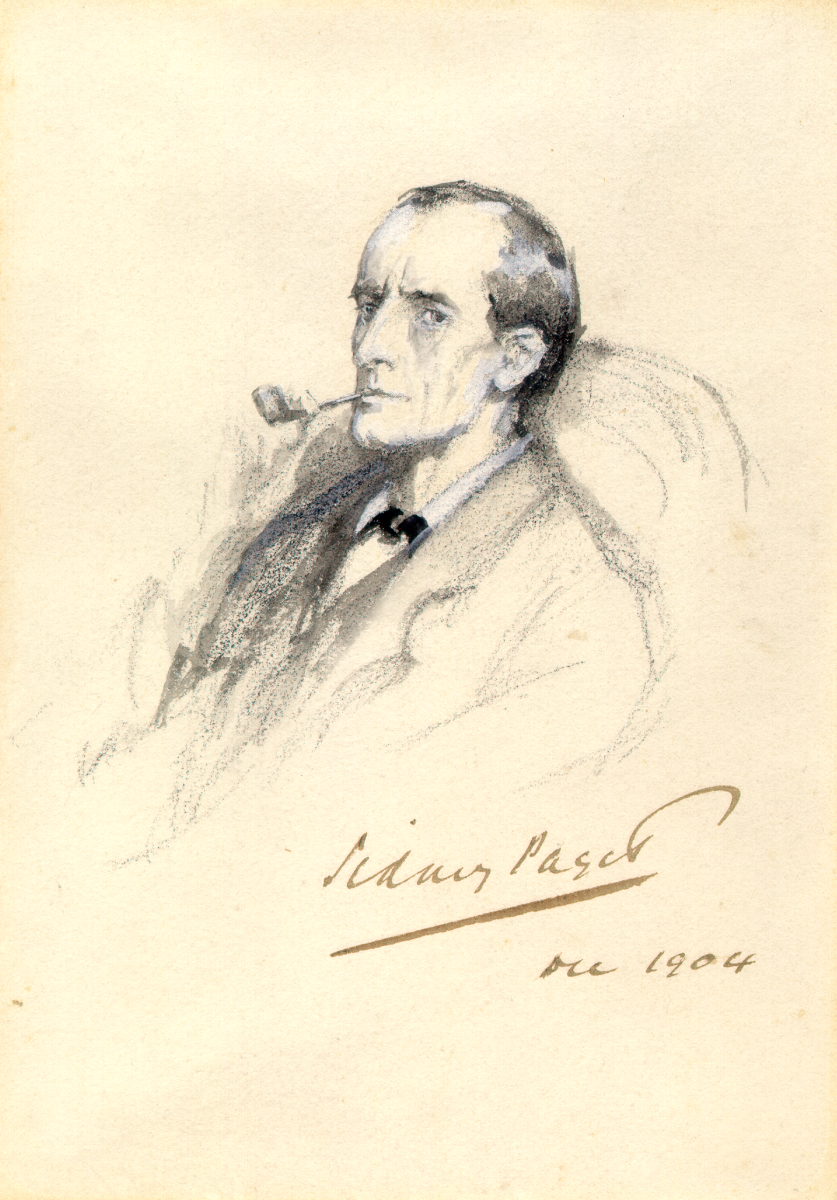A Lasting Literary Friendship.
There are a number of elements that combine to make a successful Sherlock Holmes story. These include a good plot, the right atmosphere, and the deductive powers of Holmes himself. But underpinning these is the lasting friendship between Sherlock Holmes and Doctor John H. Watson. This is the ‘glue‘ that holds the Sherlock Holmes stories together.
Their friendship begins in the first Sherlock Holmes story, A Study In Scarlet, (1887.) As they discuss sharing rooms together, Sherlock Holmes admits one of his faults to Doctor Watson: “I get in the dumps at times, and don’t open my mouth for days on end. You must not think I am sulky when I do that. Just let me alone, and I’ll soon be right.“ By thus being completely honest with Doctor Watson, Sherlock Holmes is laying a good foundation for their future friendship.
Together with his solitary nature, Sherlock Holmes is also entirely devoted to his work. He shuns the society of other people - with the exception of Doctor Watson.
Sherlock Holmes values the loyalty of Doctor Watson. Watson is solid and dependable - a reassuring presence for Holmes.
Doctor Watson is also a useful sounding board for Sherlock Holmes. Although he lacks Holmes’s deductive powers, Watson is still an intelligent man in his own right. Thus he aids Holmes in this way, too. As Sherlock Holmes explains to his client, Jabez Wilson, in The Red - Headed League: “This gentleman, Mr Wilson, has been my partner and helper in many of my most successful cases, and I have no doubt that he will be of the utmost use to me in yours also.“
Sherlock Holmes also has the pleasure of sharing his adventures with Doctor Watson. The loyal doctor adds some human warmth to the stories. This contrasts with the often ‘cold fish‘ nature of Sherlock Holmes.
In his turn, Doctor Watson is given the unique opportunity to be Sherlock Holmes’s right-hand man. He also gains literary fame as the chronicler of Sherlock Holmes’s cases. Watson would otherwise have been just another doctor practising in Victorian and Edwardian England.
The friendship between Holmes and Watson is sometimes strained. This is especially true when it comes to Sherlock Holmes’s drug use. In The Sign of The Four, Doctor Watson discovers that Holmes is using cocaine. Watson reminds Holmes of the dangers of this: “Count the cost ! Your brain may, as you say, be roused and excited, but it is a pathological and morbid process, which involves increased tissue-change, and may at last leave a permanent weakness.“
However, by the time of The Missing Three-Quarter, published in 1904, Watson notes that, “For years I had gradually weaned him from that drug mania which had threatened once to check his remarkable career.“
Another bone of contention between the two men is Watson’s literary efforts. When Watson writes up A Study In Scarlet, Holmes is scathing: “Honestly I cannot congratulate you upon it. Detection is, or ought to be, an exact science and should be treated in the same cold and unemotional manner. You have attempted to tinge it with romanticism," (The Sign of The Four.) Watson quite rightly rejects Holmes’s criticism - as he continued to do in future cases.
Sir Arthur Conan Doyle wrote four Sherlock Holmes novels and fifty-six short stories. In doing so he created the most famous partnership in literature - that of Sherlock Holmes and Doctor Watson. Long may they continue to entertain and enthral us.
END.

Related
Comments
Comments are disabled for this post.

 to add an item to your Itinerary basket.
to add an item to your Itinerary basket.





